In de moderne tijd, India staat vooral bekend om de huisvesting van een groot aantal runderen. De wereldwijde melkproductie in 2019 werd geschat op ongeveer 268 miljard dollar, met Indië, de Verenigde Staten, China, Pakistan, en Brazilië voorop.
De genetische bronnen van koeienrassen in India behoren tot de grootste ter wereld. Het is het op twee na rijkste biodiversiteitsland in Azië. Er zijn 192,49 miljoen runderen in India, met 43 geregistreerde inheemse koeien van Indiaas ras. In aanvulling, er zijn onopvallende veestapels in India. Van het totale vee, ongeveer 48 miljoen runderen zijn melkvee.
Sommige van deze inheemse koeienrassen zijn beter aangepast aan de agro-klimatologische omstandigheden in India, en sommige presteren uitzonderlijk goed in andere landen over de hele wereld voor melk, vlees of andere verwante agribusiness . In de laatste paar jaren, veel inheemse rassen zijn achteruitgegaan omdat het niet rendabel is om ze in stand te houden.
Inheemse koeienrassen hebben bijkomende voordelen zoals een betere ziekteresistentie, laag inputbeheer, en beter overleven bij extreem weer, waardoor ze van vitaal belang zijn in het huidige klimaat van klimaatverandering.
Een koe is een veelzijdig vee omdat het melk produceert, vlees, verbergt, en trekkracht. Verder, sinds hun domesticatie, ze hebben een belangrijke rol gespeeld in de menselijke cultuur door deel te nemen aan vechtspellen, rassen, en religieuze ceremonies. Omdat koeien grote dieren zijn, koeienhouderij vereist een meer georganiseerde managementstijl dan de meeste andere soorten vee, bijdragen aan het complexe en gelaagde karakter van vroege agrarische samenlevingen.
De verspreiding van gedomesticeerde soorten over verschillende continenten en hun aanpassing aan verschillende omgevingen heeft geleid tot de ontwikkeling van veel verschillende soorten koeien. In de afgelopen eeuwen, deze grote verscheidenheid aan kenmerken is geaccentueerd door de ontwikkeling van goed gedefinieerde, gespecialiseerd, en genetisch geïsoleerde rassen.
Er zijn verschillende soorten koeien in India. Indiase koenamen zijn meestal afgeleid van het fokkanaal van de koe. We hebben hieronder een lijst met Indiase koeienrassen opgesteld.
Een trekras dat bekend staat om zijn kracht en uithoudingsvermogen. Het Amritmahal-ras is een vurige en actieve koe van het Indiase ras. Ossen zijn bijzonder geschikt voor draven en snel transport.

Andere namen van Amritmahal-koeienrassen in India :Doddadana, Jawari Dana, Nummer Dana
Amritmahal-ras Hoofdgebruik: :Werk – Transport en Diepgang
Amritmahal-ras Kweekkanaal :Karnataka
Amritmahal-ras Zichtbare kenmerken :Amritmahal koeienras heeft lange hoorns. Ze hebben een lange kop die naar beneden taps toeloopt naar de snuit.
Amritmahal-ras Oorsprong :De heerser van Mysore richtte een kudde op tussen 1572 en 1636 na Christus. In het Hindi, Amrit betekent melk en Mahal betekent huis; dit ras is ontwikkeld vanuit een Zuid-Indiaas trekras om de melkproductiviteit te verhogen.
Amritmahal-ras Kleur :Grijs, maar kan variëren van wit tot bijna zwart. Sommige dieren hebben witgrijze markeringen op hun gezicht en keelhuid. Er zijn donkere tinten op de nek, schouders, bult, en achterhand.
Amritmahal-ras Vorm en grootte van hoorns :De hoorns zijn lang. De zwarte punten komen uit de bovenkant van de peiling in een achterwaartse en opwaartse richting, draai naar binnen en eindig in scherpe zwarte punten - soms ontroerend.
Amritmahal-ras Melkgift per lactatie (kg) :572
Ossen van het Bachaur-ras kunnen lange tijd werken zonder pauzes te nemen.

Andere namen van Bachaur-koeienrassen in India :Bhutia
Bachaur-ras Hoofdgebruik: :Werk – Ontwerp
Bachaur-ras Kweekkanaal :Bihar
Bachaur-ras Zichtbare kenmerken :Bachaur koeienras is middelgroot met rechte ruggen. Het voorhoofd is vlak of licht convex.
Bachaur-ras Oorsprong :Het Bachaur-ras lijkt op het Hariana-ras.
Bachaur-ras Kleur :Grijs of wit.
Bachaur-ras Vorm en grootte van hoorns :Ze hebben kleine, stompe hoorns die zowel naar buiten als naar boven en naar beneden gebogen zijn.
Bachaur-ras Melkgift per lactatie (kg) :225 – 630 (347 gemiddeld)
In de eerste plaats opgevoed voor ossenkracht, melk, en mest.

Andere namen van Badri-koeienrassen in India :Pahadi
Badri ras Hoofdgebruik: :Melk en Tap
Badri ras Kweekkanaal :Uttarakhand
Badri ras Zichtbare kenmerken :Badri koeienras is klein, actief, en vastberaden. Met een prominente peiling en een middelgrote tot grote bult, het voorhoofd is recht. Heeft een kleine uier die opgetrokken is met het lichaam.
Badri ras Oorsprong :Badri koeienras is inheems. Het ras komt voor in de heuvelachtige streken van Uttarakhand.
Badri ras Kleur :Bruin, Zwart of grijs. Vrouwelijke koeien zijn soms ook wit van kleur.
Badri ras Vorm en grootte van hoorns :Naar boven en naar binnen gebogen. Mannetjes hebben hoorns van 10 tot 22 cm, terwijl vrouwtjes hoorns hebben van 15 tot 25 cm.
Badri ras Melkgift per lactatie (kg) :547 – 657 (632 gemiddeld)
Vergeleken met koeien van andere Indiase rassen, het karakter van Bargur-runderen is erg gevoelig en vurig, waardoor ze moeilijk te trainen zijn. In de eerste plaats ontworpen voor het uitvoeren van landbouwwerkzaamheden op oneffen en heuvelachtig terrein, ze zijn licht van constructie. Zijn snelheid en uithoudingsvermogen in draf kunnen door geen enkel ander ras worden geëvenaard.

Andere namen van Bargur-koeienrassen in India :-Geen-
Bargur ras Hoofdgebruik: :Werk – Ontwerp
Bargur ras Kweekkanaal :Tamilnadu
Bargur ras Zichtbare kenmerken :Bargur koe heeft lichtbruine hoorns. De vachtkleur kan bruin zijn met opvallende witte aftekeningen.
Bargur ras Oorsprong :Koeien van dit ras zijn te vinden in de Bargur-heuvels van Bhavani taluk in het Erode-district.
Bargur ras Kleur :Bruin met witte vlekken.
Bargur ras Vorm en grootte van hoorns :Met een voorwaartse curve, de hoorns zijn achterover hellend, naar buiten en naar boven bij de wortel; ze zijn scherp aan de punt. De hoorns zijn middelgroot en lichtbruin van kleur.
Bargur ras Melkgift per lactatie (kg) :250 – 1300 (350 gemiddeld)
Belahi-runderen zijn lokaal en zijn vernoemd naar hun lichaamskleurpatronen. De term 'Belaha' wordt gebruikt om een combinatie van kleuren te beschrijven. Voor generaties, Gujjars, ook bekend als Langarias, hebben deze koeien van het Indiase ras in stand gehouden.

Andere namen van Belahi-koeienrassen in India :Morni, desi
Belahi-ras Hoofdgebruik: :Melk, Tocht en mest
Belahi-ras Kweekkanaal :Haryana, Chandigarh
Belahi-ras Zichtbare kenmerken :Deze raskoeien zijn middelgroot. Het lichaam heeft een roodbruin kleurpatroon, met een wit gezicht en ledematen en een wit ventraal gebied van variabele intensiteit. Met prominente peiling, dit dier heeft een rechte, brede kop.
Belahi-ras Oorsprong :Koeien van dit ras zijn te vinden in de Bargur-heuvels van Bhavani taluk in het Erode-district.
Belahi-ras Kleur :Wit of roodbruin en grijs.
Belahi-ras Vorm en grootte van hoorns :De hoorns zijn sikkelvormig, naar boven en naar binnen gebogen. De gemiddelde grootte van een mannelijke hoorn is 27,2 cm en de gemiddelde grootte van een vrouwelijke hoorn is 25,4 cm.
Belahi-ras Melkgift per lactatie (kg) :182 – 2092 (1014 gemiddeld)
Binjharpuri-koeien zijn inheemse Indiase koeienrassen met een tweeledig doel. Dit ras is te vinden in het hele Jajpur-district en aangrenzende gebieden van Kendrapara en Bhadrak. Gebieden met hoge concentraties zijn onder andere Bari, Binjharpur, en Dashrathapur in het district Jajpur.

Andere namen van Binjharpuri-koeienrassen in India :Deshi
Binjharpuri-ras Hoofdgebruik: :Voedsel-Melk, Werk- Ontwerp, mest
Binjharpuri-ras Kweekkanaal :Odisha
Binjharpuri-ras Zichtbare kenmerken :Deze raskoeien zijn middelgroot en sterk. bij mannen, de bult, nek, en sommige delen van het gezicht en de rug zijn zwart, ongeacht de vachtkleur.
Binjharpuri-ras Oorsprong :Binjharpuri is een inheems ras. Ze zijn vernoemd naar de plaats "Binjharpur" van het Jajpur-district in Orissa
Binjharpuri-ras Kleur :Wit, grijs, zwart of bruin van kleur.
Binjharpuri-ras Vorm en grootte van hoorns :De hoorns zijn naar boven en naar binnen gebogen. Binjharpuri Man heeft een hoornlengte variërend van 21,17 ± 2,86 cm, Binjharpuri-vrouwtjes hebben een hoornlengte van 12,70 ± 1,31 cm.
Binjharpuri-ras Melkgift per lactatie (kg) :915 – 1350
Deze koeien van het Indiase ras worden voornamelijk gebruikt voor trek. De hoeveelheid melk die het produceert is minder. Een paar koeien worden helemaal niet gemolken door de boeren, hun melk wordt voornamelijk gezoogd door hun mannelijke kalveren. In spreektaal, dagri betekent 'Deshi' of oud of inheems.

Andere namen van Dagri-koeienrassen in India :Gujarat Malvic
Dagri ras Hoofdgebruik: :Droogte
Dagri ras Kweekkanaal :Gujarat
Dagri ras Zichtbare kenmerken :Dagri-koeien zijn compacte runderen met rechte voorhoofden en korte lichamen.
Dagri ras Oorsprong :Indiaas Inheems koeienras.
Dagri ras Kleur :Over het algemeen wit. Echter, grijs gekleurde dagri-koeien zijn er ook.
Dagri ras Vorm en grootte van hoorns :De hoorns zijn kort, dun, en naar boven gebogen in de vorm van een lier of recht met een spitse punt.
Dagri ras Melkgift per lactatie (kg) :75 – 650 (gemiddeld 316)
Deze Indiase runderrassen worden voornamelijk gebruikt voor de trek. De hoeveelheid melk die het produceert is minder. Een paar koeien zijn geen Dangi-koeien die voornamelijk te vinden zijn in de Akola taluka van het Ahmadnagar-district, de Sinner taluka en Igatpuri taluka van het Nashik en Thane district van Maharashtra, en het Dangs-district van Gujarat. In het algemeen, dangi runderras wordt gevonden in de buurt van bergen waar bossen beschikbaar zijn in het Sahyadri-bereik.
Naast het ploegen, schrijnend, en andere veldoperaties, Dangi-koeien van Indiase rassen worden ook gebruikt voor het vervoeren van hout uit bosgebieden. Het heeft uitstekende werkkwaliteiten in gebieden met veel regen, rijstvelden, en heuvelachtig terrein.

Andere namen van Dangi-koeienrassen in India :Kandadi
Dangi ras Hoofdgebruik: :Melk, droogte
Dangi ras Kweekkanaal :Gujarat, Maharashtra, Haryana
Dangi ras Zichtbare kenmerken :Dangi-runderen hebben een ongelijkmatige verdeling van zwarte of rode vlekken op het lichaam. Er is een lichte uitstulping van het voorhoofd.
Dangi ras Oorsprong :De oorsprong van dangi-ras heeft meerdere theorieën. De naam dangi is afgeleid van het marathi-woord "dang" dat berg betekent. Deze koeien van het Indiase ras worden zo genoemd omdat ze in berggebieden voorkomen. Echter, volgens sommigen, dit ras is ontstaan in het Dangs-district van Gujarat. Ook, de synoniemnaam Kandadi kan suggereren dat het afkomstig is uit Karnataka.
Dangi ras Kleur :Dangi-runderen hebben een kenmerkende witte vachtkleur met rode of zwarte vlekken die ongelijk over het lichaam zijn verdeeld.
Dangi ras Vorm en grootte van hoorns :Korte hoorns van ongeveer 12-15 cm lang. De hoorns kunnen naar binnen en naar beneden wijzen.
Dangi ras Melkgift per lactatie (kg) :175 – 800 (Gemiddeld 430)
Voor zwaar werk, Deoni-ossen hebben de voorkeur. Op de leeftijd van ongeveer 5 tot 6 jaar, Deoni-ossen bereiken hun maximale potentieel en behouden dit gedurende hun adolescentie, d.w.z. ongeveer 12 jaar. Fokgebieden van deoni-runderen strekken zich uit van de Balaghat-reeks van de Sahyadri-heuvels in de Kannad-taluk van Aurangabad tot de Deglur-taluk van de Marathwada-regio van Maharashtra.

Andere namen van Deoni-koeienrassen in India :Surti, Dongarpati, Dongri, Wannera, Waghyd, Balankya en Shevera
Deoni-ras Hoofdgebruik: :Droogte, transport en melk
Deoni-ras Kweekkanaal :Karnataka, Maharashtra
Deoni-ras Zichtbare kenmerken :Zwart-wit gevlekte lichaamskleur, hangende oren, prominent voorhoofd en hangende oren zijn enkele van de kenmerken van Deoni-koeien.
Deoni-ras Oorsprong :Er wordt aangenomen dat Deoni-koeien zijn ontwikkeld uit de Gir-koe. De naam van dit ras komt van Deoni Taluk in het district Latur. Deoni, Udgir, en Ahmadpur taluks van Latur district vormen de werkelijke plaats van herkomst.
Deoni-ras Kleur :Zwart-wit gevlekt (Waghyd of Shevera) of volledig zwart (Balankya) of gedeeltelijk zwart gezicht met wit lichaam (Wannera).
Deoni-ras Vorm en grootte van hoorns :Van achter de ogen en aan de zijkant van de peiling, de hoorns strekken zich naar boven en naar buiten uit. De hoorn is klein van formaat en heeft stompe punten.
Deoni-ras Melkgift per lactatie (kg) :638 – 1229 (Gemiddeld 868)
Het Gangatiri-ras is een gemiddelde melkproducent met een goede trekbaarheid. Het primaire Gangatiri-koeienras wordt gevonden in Ghazipur, Ballia, Benares, Mau, Mirzapur en aangrenzende districten van Uttar Pradesh en Bhabhua en Buxar en Bhojpur districten van Bihar.

Andere namen van Gangatiri-koeienrassen in India :Shahabadi, Oost-Hariana
Gangatiri-ras Hoofdgebruik: :Droogte, mest, melk
Gangatiri-ras Kweekkanaal :Uttar Pradesh, Bihar
Gangatiri-ras Zichtbare kenmerken :Voorhoofden van Gangatiri-koeien zijn recht en breed met een ondiepe groef in het midden. Over het algemeen, de oogleden, uiteinde van een loop, hoeven, staart schakelaar, en snuit zijn zwart.
Gangatiri-ras Oorsprong : Gangatiri-koenaam is afgeleid van de rivier de Ganges.
Gangatiri-ras Kleur :Wit (Dhawar) of Grijs (Sokan).
Gangatiri-ras Vorm en grootte van hoorns :Gangatiri-koeienhoorns zijn middelgroot. De hoorns komen uit de zijkanten van de nek rond het oog en buigen naar boven totdat ze naar voren wijzen.
Gangatiri-ras Melkgift per lactatie (kg) :900 – 1200 (gemiddeld 1050)
Het Gaolao-veeras is een snel dravend ras dat ideaal is voor snel transport in heuvelachtig terrein.

Andere namen van Gaolao-koeienrassen in India :Gaugani, Arvi
Gaolao-ras Hoofdgebruik: :Melk, vervoer-
Gaolao-ras Kweekkanaal :Maharashtra, Madhya Pradesh
Gaolao-ras Zichtbare kenmerken :Gaolao-runderen hebben een opvallend lang en smal hoofd, taps toelopend naar de snuit. Naar de bovenkant van het hoofd, het voorhoofd wijkt iets terug, waardoor het een convex uiterlijk krijgt. De ogen zijn amandelvormig en licht hoekig.
Gaolao-ras Oorsprong :Deze koeien van het Indiase ras zijn ontwikkeld door de Nanda Gawali-gemeenschap. Hoewel het erg lijkt op het Ongole-veeras, het is lichter en heeft een grotere wendbaarheid.
Gaolao-ras Kleur :Mannetjes zijn zwartwit en vrouwtjes wit. De halzen van mannetjes zijn over het algemeen grijs.
Gaolao-ras Vorm en grootte van hoorns :Gaolao-koeien hebben korte en stompe hoorns die iets naar achteren buigen.
Gaolao-ras Melkgift per lactatie (kg) :470 – 725 (gemiddeld 604)
Ghumusari is trekras. Ze zijn te vinden in het westelijke deel van het district Ganjam en de aangrenzende gebieden van het district Phulbani. Gebieden van het Ganjam-district met een hoge concentratie van dit ras zijn Bhanjanagar, Sorada, en Aska.

Andere namen van Ghumusari-koeienrassen in India :Deshi
Ghumusari-ras Hoofdgebruik: :Droogte, Mest, melk
Ghumusari-ras Kweekkanaal :Odisha
Ghumusari-ras Zichtbare kenmerken :Ghumusari-runderen zijn sterk, klein formaat trektype runderen. Ze hebben een kleine kop met een platte, breed en ingedrukt voorhoofd tussen de ogen.
Ghumusari-ras Oorsprong :Ghumusari is een Indiaas inheems koeienras. Ze zijn vernoemd naar de plaats "Ghumusar" in de districten Ganjam en Phulbani van Orissa.
Ghumusari-ras Kleur :Voornamelijk wit maar soms grijs.
Ghumusari-ras Vorm en grootte van hoorns :Ghumusari-runderen hebben hoorns die naar boven en naar binnen zijn gebogen. Sommige runderen hebben misschien rechte hoorns. Ghumusari-stieren hebben een gemiddelde hoornlengte van 8,72 ± 1,54, Ghumusari Koeien hebben een gemiddelde hoornlengte van 7,47 ± 1,67 cm
Ghumusari-ras Melkgift per lactatie (kg) :450 – 650
De melkproductie is uitstekend bij meisjeskoeien. Alle soorten grond kan worden gesleept door Gir ossen, van zand tot rotsachtige ondergronden. Gevonden in de Saurashtra-regio van Gujarat, vooral Gir bos.

Andere namen van Gir-koeienrassen in India :Bhodali, Desan, Gujarati, Kathiawari, Sorthi, en Surati
Gir ras Hoofdgebruik: :Melk
Gir ras Kweekkanaal :Gujarat
Gir ras Zichtbare kenmerken :Een girvee heeft lang, hangende oren die vouwen als een blad. Gir koeien oren naar voren gericht.
Gir ras Oorsprong :Gir is de naam van het bos waar het ras is ontstaan.
Gir ras Kleur :Zuiver rood of gespikkeld rood.
Gir ras Vorm en grootte van hoorns :De hoorns van meisjes zijn bijzonder gekromd. Een zijwaartse neerwaartse en achterwaartse buiging aan de basis van de kruin, dan neigen ze naar boven, een spiraal naar binnen zwaaien, eindigend in een fijne versmalling, waardoor het een halve maan uiterlijk.
Gir ras Melkgift per lactatie (kg) :800 – 3300 (gemiddeld 2110)
Bijna elk district in het zuiden van Karnataka heeft het runderras Hallikar. Deze koeien van het Indiase ras zijn ook te vinden in aangrenzende gebieden van de staten Andhra Pradesh en Tamilnadu. Een van de beste trekrassen van Zuid-India. De meeste koeien van Zuid-Indiase rassen stammen af van dit ras.

Andere namen van Hallikar-koeienrassen in India :Mysore
Hallikar-ras Hoofdgebruik: :Droogte
Hallikar-ras Kweekkanaal :Karnataka
Hallikar-ras Zichtbare kenmerken :Witte aftekeningen of onregelmatige vlekken kunnen worden gevonden rond de ogen en wangen, evenals de nek en schouders van Hallikar-runderen.
Hallikar-ras Oorsprong :Hallikar is de naam van een ras afgeleid van de naam van de onderstam van de Golla-gemeenschap die primair verantwoordelijk is voor het fokken van het ras.
Hallikar-ras Kleur :Lichtgrijs tot wit met donkere schakeringen op achterhand en schouders, vooral bij jonge stieren.
Hallikar-ras Vorm en grootte van hoorns :Vanaf de bovenkant van de peiling, de hoorns komen dicht bij elkaar te voorschijn, worden bijna de helft van hun lengte naar boven en naar achteren gedragen, en buig naar voren en iets naar binnen om te eindigen met puntige uiteinden.
Hallikar-ras Melkgift per lactatie (kg) :227 – 1134 (gemiddeld 542)
In Noord-India, de koeien van het Hariana-indianenras staan bekend om hun tweeledige doel:ze zijn wijdverspreid op de Indo-vlaktes van de Ganges. Over het algemeen, ze worden gefokt om ossen te produceren. Hariana koe is ook een fatsoenlijke melker.

Andere namen van Hariana-koeienrassen in India :Hansi
Hariana ras Hoofdgebruik: :Droogte, melk , vervoer-
Hariana ras Kweekkanaal :Haryana
Hariana ras Zichtbare kenmerken :Hariana-runderen zijn wit gekleurd, met lang en smal gezicht, het midden van de peiling heeft een goed gedefinieerde benige prominentie en de hoorns zijn klein.
Hariana ras Oorsprong :De Hariana-runderen danken hun naam aan een regio in Noord-India die bekend staat als Haryana. De regio had twee soorten runderen, Hisar en Hansi, genoemd naar de steden waar ze vandaan kwamen. Aangenomen wordt dat hariana-runderen afkomstig zijn van deze twee stammen. De namen Hisar en Hansi bestaan tegenwoordig niet meer.
Hariana ras Kleur :Lichtgrijs of wit van kleur. Hariana-stieren hebben een opvallende donkergrijze voor- en achterhand.
Hariana ras Vorm en grootte van hoorns :Hariana-runderen hebben kleine hoorns.
Hariana ras Melkgift per lactatie (kg) :693 – 1745 (Gemiddeld 997)
Dit ras is geschikt voor een subtropisch/subvochtig/gematigd/koud bergachtig ecosysteem. Runderen van dit ras kunnen werken op smalle, slordig, golvend, heuvelachtig terrein. Himachali Pahari-runderen hebben een matige trekprestatie.

Andere namen van Himachali Pahari-koeienrassen in India :Pahari, desi, lokaal, Gauri, Himdhenu, pahadi
Himachali Pahari-ras Hoofdgebruik: :Droogte, mest, melk
Himachali Pahari-ras Kweekkanaal :Himachal Pradesh
Himachali Pahari-ras Zichtbare kenmerken :Himachali Pahari runderen zijn kleine tot middelgrote runderen met een compact cilindrisch lichaam. Ze hebben korte benen, gemiddelde bult, horizontaal geplaatste oren en relatief lange staart.
Himachali Pahari-ras Oorsprong :Himachali Pahari-runderen zijn een Indiaas Indeginous-ras. Zo genoemd omdat het inheems is in heuvels.
Himachali Pahari-ras Kleur :Zwartbruin of zwart.
Himachali Pahari-ras Vorm en grootte van hoorns :Hun hoorns zijn middelgroot en voornamelijk gebogen in de laterale en opwaartse richtingen. Himachali Pahari-stieren hebben een gemiddelde hoornlengte van 16 cm, Himachali Pahari-koeien hebben een gemiddelde hoornlengte van 13 cm.
Himachali Pahari-ras Melkgift per lactatie (kg) :300 – 650 (gemiddeld 538)
Een Kangayam-os heeft een goede arbeidscapaciteit en wordt gebruikt voor alle landbouwactiviteiten. Kangayam-ossen worden alleen gebruikt voor het vervoeren van suikerriet, hoewel er andere trekrassen beschikbaar zijn in het gebied. Kangayam-runderen zijn te vinden in Kangayam en Dharapuram taluks van het Erode-district, en in Karur taluk van het district Karur.

Andere namen van Kangayam-koeienrassen in India :Kongu, Kanganad
Kangayam-ras Hoofdgebruik: :Droogte, vervoer-
Kangayam-ras Kweekkanaal :Tamilnadu
Kangayam-ras Zichtbare kenmerken :Kangayam-runderen worden gekenmerkt door lange, bijna ronde hoorns, een lange bult en een sterk lichaam.
Kangayam-ras Oorsprong :Het ras dankt zijn naam aan Kangayam taluk in het district Erode, deel van de wijk Coimbatore. Late Pattogar van Palayakottai ontwikkelde dit ras. Het ras is vergelijkbaar met het Umblachery-ras.
Kangayam-ras Kleur :Aanvankelijk, de vacht van het kalf is rood, maar het begint grijs te worden na zes maanden. Een stierenbult, voor- en achterhand, gezicht, en poten zijn donker gekleurd. Bullocks zijn grijs van kleur. Over het algemeen, koeien zijn grijs of grijs en wit. Het is gebruikelijk dat kangayam-koeien een donkergrijs gezicht hebben.
Kangayam-ras Vorm en grootte van hoorns :Sterke en lange horens die naar achteren zwaaien, naar buiten, en naar boven, naar binnen gebogen met uiteinden die samenkomen om een halvemaanvorm te vormen.
Kangayam-ras Melkgift per lactatie (kg) :540
Kankrej-koeien van het Indiase ras worden meestal gebruikt voor de landbouw. Dit ossenras wordt voornamelijk gebruikt voor transport in dorpsgebieden.

Andere namen van Kankrej-koeienrassen in India :Talabda, Nagar, Wad, loon, Bonnai, Vagadia
Kankrej-ras Hoofdgebruik: :Droogte, melk, vervoer-
Kankrej-ras Kweekkanaal :Rajasthan , Gujarat
Kankrej-ras Zichtbare kenmerken :Runderen van dit ras zijn het zwaarst. Een sterke liervormige hoorn, een grote slinger, en open oren zijn prominente kenmerken van dit ras. zijn compacte runderen met rechte voorhoofden en korte lichamen.
Kankrej-ras Oorsprong :De naam van dit ras is afgeleid van de geografische ligging Kank, een taluka van het district Banaskantha in Gujarat.
Kankrej-ras Kleur :Staal grijs, ijzergrijs of zilvergrijs. Ossen hebben een donkere achterhand, voorvoeten, en bult dan de rest van hun lichaam.
Kankrej-ras Vorm en grootte van hoorns :Hoorns zijn naar buiten en naar boven gebogen in de vorm van een lier.
Kankrej-ras Melkgift per lactatie (kg) :800 – 1800 (Gemiddeld 1738)
Runderen van het kenkatha-ras worden gebruikt voor lichte trek op wegen en voor de teelt. Een robuuste soort die goed is aangepast aan de klimatologische omstandigheden van Bundelkhand, met sterke voeten en goed ontwikkelde benen.

Andere namen van Kenkatha-koeienrassen in India :Kenwaria
Kenkatha-ras Hoofdgebruik: :Droogte
Kenkatha-ras Kweekkanaal :Uttar Pradesh, Madhya Pradesh
Kenkatha-ras Zichtbare kenmerken :Kenkatha-runderen zijn klein, sterk, en vrij krachtig met een naar voren gerichte hoorn.
Kenkatha-ras Oorsprong :Kenkantha-runderen worden gefokt langs de oevers van de rivier de Ken in Bundelkhand, vandaar dat hun naam ook is afgeleid van de Ken-rivier.
Kenkatha-ras Kleur :Over het algemeen, grijs op de loop en donkergrijs op de rest van het lichaam.
Kenkatha-ras Vorm en grootte van hoorns :De hoorns stijgen vanuit de buitenste hoeken van de nek in een opmerkelijk voorwaartse richting en eindigen op scherpe punten.
Kenkatha-ras Melkgift per lactatie (kg) :-NA-
Koeien van het Indiase ras Khariar zijn in wezen een trekras dat wordt gebruikt voor trekkracht in hun oorspronkelijke habitat, die heuvelachtig en golvend van aard is. Het Nuapada-district en de aangrenzende gebieden in de districten Kalahandi en Balangir zijn inheems in het kariar-veeras. Khariar, Komna, Sinapali en Boden blokken van Nuapada district zijn dichtbevolkt met dit ras.

Andere namen van Khariar-koeienrassen in India :Deshi
Khariar-ras Hoofdgebruik: :Droogte, mest, melk
Khariar-ras Kweekkanaal :Odisha
Khariar-ras Zichtbare kenmerken :Dagri-koeien zijn compacte runderen met rechte voorhoofden en korte lichamen.
Khariar-ras Oorsprong :Indiaas Indeginous koeienras dat is vernoemd naar zijn inheemse darmkanaal "Khariar" in het district Nuapada.
Khariar-ras Kleur :Het is een kleine, sterk trekvee. de bult, nek, en sommige delen van het gezicht en de rug zijn donker van kleur.
Khariar-ras Vorm en grootte van hoorns :Hoorns zijn recht. Vrij vaak naar boven en naar binnen. Khariar-stieren hebben een gemiddelde hoornlengte van 12,34 ± 0,21 cm, Khariar-koeien hebben een gemiddelde hoornlengte van 10,12 ± 0,27 cm.
Khariar-ras Melkgift per lactatie (kg) :300 – 450
Het Khérigarh-veeras staat bekend om zijn snelle looptempo. Voornamelijk gebruikt voor ontwerpdoeleinden.

Andere namen van Khérigarh-koeienrassen in India :Kharigarh, Cheri, Khari, Khairagarh
Khérigarh-ras Hoofdgebruik: :Droogte
Khérigarh-ras Kweekkanaal :Uttar Pradesh
Khérigarh-ras Zichtbare kenmerken :Khérigarh zijn kleine runderen.
Khérigarh-ras Oorsprong :Vernoemd naar de stad Khairagarh in Uttar Pradesh.
Khérigarh-ras Kleur :Wit of grijs
Khérigarh-ras Vorm en grootte van hoorns :De hoorns zijn middelgroot (15 cm), rechtop, naar buiten en naar boven buigen. De basis van de hoorns is dik.
Khérigarh-ras Melkgift per lactatie (kg) :300 – 500
Khillar Bullocks staan bekend om hun snelle trekvermogen. De term 'Khillari' verwijst naar een kudde vee en de persoon die ze hoedt staat bekend als een 'Khillari' of 'Thillari'. Khillari is te vinden in vier verschillende soorten in heel India. Atpadi Mahal ligt in het zuiden van Maharashtra; Mhaswad ligt dicht bij Satara en Solapur; Thillari ligt in de heuvels van Satpura, en Nakali ligt vlakbij de aangrenzende regio.

Andere namen van Khillar-koeienrassen in India :Shikari, Mandeshi, Thillar
Khillar-ras Hoofdgebruik: :Droogte
Khillar-ras Kweekkanaal :Maharashtra, Karnataka
Khillar-ras Zichtbare kenmerken :Khillar-runderen hebben lange, boogvormige hoorns. Van de neusbrug naar het midden van de peiling, er is een duidelijke richel op het voorhoofd. Prominente en scherpe neusbrug.
Khillar-ras Oorsprong :Ras van vee dat afstamt van het fokken van Hallikar en Amritmahal.
Khillar-ras Kleur :Grijswit.
Khillar-ras Vorm en grootte van hoorns :Lang en puntig, de hoorns volgen de ronding van het voorhoofd. Dicht bij de wortel gelegen en met een dikke basis, ze groeien de helft van hun lengte naar achteren en draaien dan naar boven in een gladde boogvorm die uniek is voor dit ras, eindigend in punten.
Khillar-ras Melkgift per lactatie (kg) :240 – 515 (gemiddeld 451,48)
Kokan Kapila-rasrunderen zijn nuttig voor boeren in allerlei soorten landbouwbedrijven. Door het ontbreken van vervoersvoorzieningen, Konkan Kapila-koeien zijn de enige melkbron in sommige delen van het Konkan-gebied.
De dieren kunnen zelfs in slordige bosgebieden grazen zonder zich vermoeid te voelen en zijn goed aangepast aan productiesystemen met een lage input. De dieren zijn zeer hittetolerant.

Andere namen van Kokan Kapila-koeienrassen in India :Konkan, Konkan gidda
Kokan Kapila-ras Hoofdgebruik: :Droogte, mest, melk
Kokan Kapila-ras Kweekkanaal :Maharashtra
Kokan Kapila-ras Zichtbare kenmerken :Ze hebben compacte lichamen, horizontale oren, en rechte voorhoofden en zijn kleine tot middelgrote runderen. Over het algemeen, de oogleden, uiteinde van een loop, hoef, en staartschakelaar zijn zwart.
Kokan Kapila-ras Oorsprong :Kokan kapila is een Indiaas Indeginous koeienras. Het ontleent zijn naam aan zijn plaats in de Konkan-gordel van de staat Maharashtra en Kapila is de naam die in de oude Indiase literatuur aan koe wordt gegeven.
Kokan Kapila-ras Kleur :Diverse vachtkleuren – roodbruin, zwart, wit/grijs.
Kokan Kapila-ras Vorm en grootte van hoorns :Rechte hoorns die naar buiten en naar achteren stijgen, eindigend op een punt. Kokan Kapila-stieren hebben een gemiddelde hoornlengte van 18,45 cm, Kokan Kapila-koeien hebben een gemiddelde hoornlengte van 18,30 cm.
Kokan Kapila-ras Melkgift per lactatie (kg) :450
Kosali runderras wordt meestal gevonden in de vlakten van Chhattisgarh. De Yadava/Rawuth-gemeenschap heeft dit vee generatie na generatie gehouden.

Andere namen van Kosali-koeienrassen in India :-Geen-
Kosali-ras Hoofdgebruik: :Droogte, mest, melk
Kosali-ras Kweekkanaal :Chhattisgarh
Kosali-ras Zichtbare kenmerken :Kosali-runderen hebben zwarte snuiten, oogleden, staart schakelaars, en hoeven. Het heeft een brede, vlak, recht hoofd. De grootte van de bult is klein tot medium. De uier is klein en komvormig.
Kosali-ras Oorsprong :Kosali is een Indiaas Indeginous koeienras. Its name is derived from ancient name of Chhattisgarh that is “Kowshal”.
Kosali breed Colour :Light-red or whitish grey. Few kosali cattels are also found to have black coat or red coat with whitre patches.
Kosali breed Horns Shape and Size :Kosali cattle has stuppy and short horns which can grow in any direction:inward, upward or outward. Kosali bulls have average horns length of 21 cm, Kokan Kapila Cows have average horns length of 12 cm.
Kosali breed Milk yield per lactation(kg) :200 – 250 (Average 210)
A heavy draught breed, this breed is used mainly in the black cotton soil of the watershed of the river Krishna.

Other names of Krishna Valley cow breeds in india :Kistna Valley
Krishna Valley breed Main Use :Draught
Krishna Valley breed Breeding Tract :Maharashtra, Karnataka
Krishna Valley breed Visible Characteristics :Krishna valley cattles have a massive body with a prominent bulge on the forehead.
Krishna Valley breed Origin :It is an Indian Indeginous cow breed. Deriving its name from the krishna river, Krishna Valley cattle are descended from Gir cattle from Kathiawar, Ongole cattle from Andhra Pradesh, Kankrej cattle from Gujarat, and local cattle with Mysore blood.
Krishna Valley breed Colour :Generally grey – white in colour. Krishna Valley bullocks have darker hind and fore quarters. Krishna Valley cows are comapritively more white. Some varied colour patterns such as brown and white, black and white, or mottled, are also observed.
Krishna Valley breed Horns Shape and Size :The horns are curved and small in size. They rise in an outward direction from the poll and curve slightly upward and inward.
Krishna Valley breed Milk yield per lactation(kg) :-NA-
This cow’s milk is an important source of protein for the local population, especially during the lean winter months. The fat content of milk is high, around 5% and is used mostly for making butter and churpi, an important part of the local diet.
Ladakhi cattle are well adapted to high altitude, cold climates, and hypoxia. A compact body and short legs make it more suitable for mountainous territories.

Other names of Ladakhi cow breeds in india :-None-
Ladakhi breed Main Use :Draught, manure, melk
Ladakhi breed Breeding Tract :Jammu &Kashmir
Ladakhi breed Visible Characteristics :Ladakhi cattle have a small, hairy forehead and a long face. Their legs are short and they have a small hump.
Ladakhi breed Origin :Ladakhi is an Indian Indeginous cow breed. Originating from the Ladakh region of J&K.
Ladakhi breed Colour :Black or brown.
Ladakhi breed Horns Shape and Size :Horns are mainly curved, pointing upward and forward with pointed tips over the forehead. Ladakhi bulls have average horns length of 16 cm, Ladakhi Cows have average horns length of 11 cm.
Ladakhi breed Milk yield per lactation(kg) :-NA-
Locally known as Lakhimi, the indigenous cattle of Assam are found throughout the state. Especially in muddy fields for paddy cultivation, Lakhimi Bullocks are excellent draft animals for carting and plowing. Dairy products from Lakhimi cattle are high in fat, which is why they elicit a high price.

Other names of Lakhimi cow breeds in india :-None-
Lakhimi breed Main Use :Draught, melk
Lakhimi breed Breeding Tract :Assam
Lakhimi breed Visible Characteristics :Typically, the legs of Lakhimi cattle are very short and the cattle are small. The coat color varies from brown to grey. It has a medium-sized hump and a slightly curved backline. It has a small Udder which is bowel shaped.
Lakhimi breed Origin :Lakhimi is an Indian Indeginous cow breed originated in Assam.
Lakhimi breed Colour :Grey or Brown.
Lakhimi breed Horns Shape and Size :Straight shapped hons with average length of 17 cm.
Lakhimi breed Milk yield per lactation(kg) :325 – 375 (Average 359)
Well adapted to the local agro-ecological systems of the Western Ghats, malnad gidda cattles play an important role in the rural economy of this region by providing milk, manure, and draft power for little input.

Other names of Malnad Gidda cow breeds in india :Varshagandhi, Gidda, Uradana
Malnad Gidda breed Main Use :Draught, manure, melk
Malnad Gidda breed Breeding Tract :Karnataka
Malnad Gidda breed Visible Characteristics :With a compact frame of around 80-120 kilos, Malnad gidda cattle is small and light. It has a black tail-switch and a small hump. The udder is small and is shaped like a bowl.
Malnad Gidda breed Origin :Indian Indeginous cow breed.
Malnad Gidda breed Colour :The coat colour is black. Fawnish hues are also dominant on the thighs and shoulder region of the coat.
Malnad Gidda breed Horns Shape and Size :The horns are commonly straight and small.
Malnad Gidda breed Milk yield per lactation(kg) :218.3
The Malvi cattle are known for their quick transportation, endurance, and ability to carry heavy loads on rough roads. Ratlam district and adjacent areas of Madhya Pradesh are also home to this cattle breed.

Other names of Malvi cow breeds in india :Manthani, Mahadeo puri
Malvi breed Main Use :Draught, vervoer-
Malvi breed Breeding Tract :Madhya Pradesh
Malvi breed Visible Characteristics :A Malvi cattle has a lyre shaped horn and is strong and well built.
Malvi breed Origin :Malvi is an Indian Indeginous cow breed. It is named after Malwa region where it is found.
Malvi breed Colour :Malvi cattle are white or white greyish in colour. The cattle has neck, shoulders, hump and quarters almost black in colour. With age, cows and bullocks’ colour changes to almost pure white.
Malvi breed Horns Shape and Size :The horns are curved, rising outward and upward from the outer edge of the poll. Average length of the horn is 20-25 cm.
Malvi breed Milk yield per lactation(kg) :627 – 1227 (Average 915.6)
Strong and docile, Mewati cattle are ideal for heavy ploughing, carting, and drawing water from deep wells.

Other names of Mewati cow breeds in india :Mehwati, Kosi
Mewati breed Main Use :Draught
Mewati breed Breeding Tract :Rajasthan, Uttar Pradesh, Haryana
Mewati breed Visible Characteristics :A Mewati cattle’s face is long and narrow with a straight, sometimes lightly protruding forehead.
Mewati breed Origin :Mewati is an Indian Indeginous cow breed. It is similar to Haryana, but there are traces of Gir, Kankrej, and Malvi breeds.
Mewati breed Colour :White in colour. Quarters, neck and shoulders are of darker shade.
Mewati breed Horns Shape and Size :The horns are small to medium in size with pinted tips.
Mewati breed Milk yield per lactation(kg) :958
The motu cattle breed is primarily used for its draught power when it comes to hilly and undulating terrain.

Other names of Motu cow breeds in india :Deshi
Motu breed Main Use :Draught, milk, mest
Motu breed Breeding Tract :Odisha
Motu breed Visible Characteristics :Motu cattle are small, strong, and draft type cattle. Most cattle are polled and brown in colour.
Motu breed Origin :Indian Indeginous cow breed. Its name is derived from the local area “motu” of Makangiri district in Orissa.
Motu breed Colour :Reddish-brown in colour. Sometimes grey or rarely white.
Motu breed Horns Shape and Size :Horns rise straight upwards. The tips of the horns are rounded.
Motu breed Milk yield per lactation(kg) :100 – 140
Suitable for the unrelenting climatic circumstances of Rajasthan, nagori cattle breed is maily used for labour and transport. Apart from Nagaur district, this cattle breed is also found in Jodhpur district and Nokha tehsil of Bikaner district.

Other names of Nagori cow breeds in india :-None-
Nagori breed Main Use :Draught, vervoer-
Nagori breed Breeding Tract :Rajasthan
Nagori breed Visible Characteristics :The “Nagori” is a white, upstanding, alert, and agile cattle breed with a long and narrow face similar to a horse.
Nagori breed Origin :Nagori is an Indian Indeginous cow breed. It derives its name from Nagaur district of Rajasthan.
Nagori breed Colour :Light grey or white
Nagori breed Horns Shape and Size :The horns are medium to small in size. The horns rise from outer edge of the poll, extending in an outward direction and gently curve upward with pointy ends.
Nagori breed Milk yield per lactation(kg) :479 – 905 (Average 603)
Niri cattle are dual purpose cattle, used to get milk and also for draught purposes. Around the Aravali forest range is where the majority of the Nari cattle population resides. The terrain is hilly and undulating in these regions. The region has a semi-arid tropical climate with a high mean temperature.

Other names of Nari cow breeds in india :Sirohi
Nari breed Main Use :Draught, melk
Nari breed Breeding Tract :Gujarat, Rajasthan
Nari breed Visible Characteristics :The size of Niri cattle is Medium. Male horns are mostly oriented forward while female horns are mostly oriented outward. Horns are usually wide, long, thick at the bottom, and pointed at the tips. In most cases, the forehead is broad and slightly concave.
Nari breed Origin :Nari cattle is an Indian Indeginous cow breed. The name Nari derives from the word Nar, which refers to hills.
Nari breed Colour :Generally white. Echter, grey coloured dagri cows are also there.
Nari breed Horns Shape and Size :Horns rise outward in Nari cows and forward in nari bullocks. Nari bulls have average horns length of 55.56 cm, Nari Cows have average horns length of 51.68 cm.
Nari breed Milk yield per lactation(kg) :1118 – 2222 (Average 1647)
The Nimari cattle breed is primarily used in farming activities as well as for transportation. They are mainly found in the central parts of Khargaon, Badwani districts, and few are found in the bordering Dhar district and surrounding areas of Madhya Pradesh and Maharashtra.

Other names of Nimari cow breeds in india :Khargoni, Khargaon, Khurgoni
Nimari breed Main Use :Draught, vervoer-
Nimari breed Breeding Tract :Madhya Pradesh
Nimari breed Visible Characteristics :Nimari cattle is brownish-red in colour and has a huge body structure. The brownish-red coat also has white spots on it.
Nimari breed Origin :Nimari is an Indian Indeginous cow breed. It is named after the Niamr region og Madhya Pradesh. Nimari cattle are crossbred from Gir and Khillari cattle. The color of its coat, its massive body structure, and convexity of its forehead are all attributes of its Gir genes, whereas its Khillari genes contribute to its hardiness, agility, and temper.
Nimari breed Colour :Brownish red with white spotting.
Nimari breed Horns Shape and Size :It is common for horns to rise in a backward direction from the outer edge of the poll, somewhat in the same way as in Gir cattle, before turning upward, outward, and finally inward.
Nimari breed Milk yield per lactation(kg) :600 – 954 (Average 766.9)
Ongole cattel breed is found all along the coast from Nellore to Vizianagram. Ongoles are exported to several countries. The USA imported it for beef; Brazil imported it for beef and milk; Sri Lanka, Fiji and Jamaica imported it for draught; Australia imported it for heat tolerance and beef; and Switzerland imported it for disease resistance.

Other names of Ongole cow breeds in india :Nellore
Ongole breed Main Use :Draught, melk
Ongole breed Breeding Tract :Andhra Pradesh
Ongole breed Visible Characteristics :Known for their magnificent gait, stumpy horns, large, fleshy, serrated dewlaps, and smooth, flowing folds rather than tight constrictions, Ongole cattle are easily distinguishable.
Ongole breed Origin :Indian Indigenous cow breed.
Ongole breed Colour :Glossy white coat ( called padakateeru in local Telugu language). Dark grey markings appear on the head, neck, and hump of males. There are also black points on the knees and pasterns. The muzzel and eyelashes are black.
Ongole breed Horns Shape and Size :Horns are thick at the base and short and stumpy. Horns rise outwards and backwards. Horns are Ongole cows are thinner then ongole bulls.
Ongole breed Milk yield per lactation(kg) :688
Ponwar bullocks are fast-moving, ideal for farming activities and provide an important source of income to the farmers. Puranpur tehsil, located in Pilibhit district, is the home to ponwar cattle breed. Ponwar cattle is found in Mainakot, Mazara, Bhirkhera, Faizulaganj and Rajpur Semra villages.

Other names of Ponwar cow breeds in india :Purnea
Ponwar breed Main Use :Draught, vervoer-
Ponwar breed Breeding Tract :Uttar Pradesh
Ponwar breed Visible Characteristics :It’s a medium to large size cattle with piculiar whit spotting on white coat.
Ponwar breed Origin :Breeders believe this breed is a cross between plain cattle and hill cattle. This breed might have originated from Nepalese hill cattle (Morang) and local white cattle.
Ponwar breed Colour :Brown or black with white coloured patches. The white coloured patching doesnt have any pattern.
Ponwar breed Horns Shape and Size :The horns medium sized and rise outward, upward and bend inward with pointy tips.
Ponwar breed Milk yield per lactation(kg) :459
Poda Thirupu bullocks are powerful and excellent for heavy plowing and carting. This cattle is are fast and agile.

Other names of Poda Thirupu / PodaThurpu cow breeds in india :Thurpu, Poda Edlu, Thurpu Edlu
Poda Thirupu breed Main Use :Draught, milk, mest
Poda Thirupu breed Breeding Tract :Telangana
Poda Thirupu breed Visible Characteristics :PodaThurpu cattle is of medium size with a compact body. A white coat with brown patches or a red/brown coat with white patches. The entire body is covered in patches. It is most common to find patches on the posterolateral sides. The base of the horns is broad. Majority of animals have a convex forehead with a deep groove at the centreort bodies.
Poda Thirupu breed Origin :Poda Thirupu is an Indian Indeginous cow breed. This breed of cattle is known as Poda Edlu (Poda locally means spotted or speckled/blotched), it typically has speckled/blotched fur (brown spots on white skin). In western Telangana, the cattle breed is known as Thurpu Edlu. Farmers who use these bullocks for draught purposes call them Thurpu Edlu (meaning East in Telugu, while Edlu means bullocks in local language). They originated on the eastern side of the Telangana district.
Poda Thirupu breed Colour :Light brown to dark brown patches on white coat.
Poda Thirupu breed Horns Shape and Size :The horns are usually straight, occasionally curved backwards and forward-pointing. Poda Thirupu Bulls have an average horn length of 31.85 cm, Poda Thirupu Cows have an average horn length of 29.98 cm.
Poda Thirupu breed Milk yield per lactation(kg) :494 – 646 (Average 570)
Pulikulam cattle do well on extensive grazing in the tropical climate of the area in open housing. Pulikulam Bulls are used for the sport of Bull riding ( Jallikattu ), which is very popular in the area.

Other names of Pulikulam cow breeds in india :Mattu Maadu, Jallikattu maadu, Kilakattu maadu, Palingu maadu, Mani maadu,
Pulikulam breed Main Use :Draught, manure, game (Jallikattu)
Pulikulam breed Breeding Tract :Tamilnadu
Pulikulam breed Visible Characteristics :Pulikulam cattle are small, compact, and have short legs. Muzzle, eyelids, tail switch, and hooves are black. Forehead is broad and level with a groove at the centre. Pulikulam bulls have a large bump while Pulikulam cows have a small bump. The udder is not well developed.
Pulikulam breed Origin :Pulikulam cattle is an Indian Indeginous cattle breed. These cattles derive their name from the village Pulikulam.
Pulikulam breed Colour :Pulikulam bulls are dark grey, and Pulikulam cows are grey or white.
Pulikulam breed Horns Shape and Size :Horns are Curved. With pointed tips, the horns bend outwards, upwards, backwards and inwards. The tips of the horns are wide apart. Pulikulam Bulls have an average horn length of 34.34 cm, Pulikulam Cows have an average horn length of 37.22 cm.
Pulikulam breed Milk yield per lactation(kg) :-None-
Farming activities on light types of soil are conducted with punganur cattle. The Punganur bull is used for carts like tongas for racing games.

Other names of Punganur cow breeds in india :-None-
Punganur breed Main Use :Draught, milk, vervoer-
Punganur breed Breeding Tract :Andhra Pradesh
Punganur breed Visible Characteristics :The punganur have a small physique.
Punganur breed Origin :Punganur is an Indian Indeginous cow breed. Rulers of Punganur developed this breed. Dus, this breed is known as Punganur after the name of the area.
Punganur breed Colour :White, grey, light brown, dark brown, or red are the common colors of Punganur cattle. Occasionally, white coat cattle are mixed with either a red or black colour.
Punganur breed Horns Shape and Size :Horns are small to medium-sized and crescent-shaped and often loose, curving backwards and forward in punganur bulls and forward and lateral in panganur cows.
Punganur breed Milk yield per lactation(kg) :194 – 1100 (Average 546)
Seemanchal region of Bihar is home to Purnea cattle, which are distributed in Araria, Purnea and Katihar, and adjoining Kishanganj, Supaul, and Madhepura districts. The Purnea cattle has a very good drought and heat tolerance.

Other names of Purnea cow breeds in india :-None-
Purnea breed Main Use :Draught, milk, mest
Purnea breed Breeding Tract :Bihar
Purnea breed Visible Characteristics :A Purnea cattle is a small animal. They have a medium hump, a small to medium dewlap, a small naval flap, and a small to the medium udder. The head is medium in size. While most Purnea cattle have flat polls, some have somewhat prominent polls.
Purnea breed Origin :Purnea is an Indian Indeginous cow breed. This cattles derives its name from purnea district in Bihar (which is part of its breeding tract).
Purnea breed Colour :Primarily grey but occasionally red and black.
Purnea breed Horns Shape and Size :Their horns are small, straight, and mostly carried upwards, but sometimes laterally as well. Purnea Bulls have an average horn length of 8.3 cm, Purnea Cows have an average horn length of 7.1 cm.
Purnea breed Milk yield per lactation(kg) :452 – 785 (Average 609.1)
The Rathi cattle breed is especially prevalent in Loonkaransar tehsil of Bikaner district. This region is also known as rathi tract. This breed is well accustomed to desert conditions.

Other names of Rathi cow breeds in india :-None-
Rathi breed Main Use :Milk
Rathi breed Breeding Tract :Rajasthan
Rathi breed Visible Characteristics :The face of Rathi cattle is broad between the eyes and slightly dishevelled. The dewlap is fine and loose. The tail is long and fine and tapers to a good black or white switch well below the hock.
Rathi breed Origin :Indian Indeginous cow breed. There are pastoral tribes called Raths who breed this cattle breed, and who live a nomadic life. The name of this brred is derived from the name of rath tribe. Apparently, Rathi cattle are a mixture of Sahiwal, Red Sindhi, Tharparkar, and Dhanni breeds with a high proportion of Sahiwal blood.
Rathi breed Colour :Generally, rathi cattle have brown coats with white patches all over, but cattle with completely brown coats or black coats with white patches are also common. In het algemeen, the lower body parts are lighter in color than the rest of the body.
Rathi breed Horns Shape and Size :Horns are short to medium-sized and curve outward, upward, and inward. .
Rathi breed Milk yield per lactation(kg) :1062 – 2810 (Average 1560)
The Red Kandhari is found in Kandhar, Mukhed, Nanded, and Biloli tehsils of Nanded district, and in Ahmadpur, Parli, and Hingoli tehsils of Latur district. The red Kandhari bull is used for heavy work.

Other names of Red Kandhari cow breeds in india :Lakhalbunda
Red Kandhari breed Main Use :Draught, Transport
Red Kandhari breed Breeding Tract :Maharashtra
Red Kandhari breed Visible Characteristics :The red coat and big size are a distinctive charecteristics of red kandhari cattle breed.
Red Kandhari breed Origin :Red Kanhari, now referred to as Red Kandhari, was the breed named in memory of Raja Somdeori’s father Raja Kanhar. Having a red color and common in the Kandhar tehsil of Nanded district, the breed naturally acquires the name Red Kandhari.
Red Kandhari breed Colour :Generally, the color is a deep, dark red, but there are variations from dull red to almost brown. Red kandhari Cows are typically lighter in color than red kandhari bulls.
Red Kandhari breed Horns Shape and Size :This breed has medium sized horns hich are evenly curved.
Red Kandhari breed Milk yield per lactation(kg) :598
Originally bred in Pakistan, organized herds have been established in the Indian states of Orissa, Tamil nadu, Bihar, Kerala, and Assam.

Other names of Red Sindhi cow breeds in india :Sindhi, Malir, Red Karachi
Red Sindhi breed Main Use :Milk
Red Sindhi breed Breeding Tract :Originally from region of pakistan, but in India Orissa, Tamil nadu, Bihar, Kerala and Assam has this breed
Red Sindhi breed Visible Characteristics :Distinct red colour and large size.
Red Sindhi breed Origin :Las Bela cattle, found in the Baluchistan state of Bela, are believed to have been the ancestors of Red Sindhis.
Red Sindhi breed Colour :Red is the dominant color of this breed. The colour varies from dark red to dim yellow. Despite patches of white on the dewlap and sometimes on the forehead, there are no large patches of white on the body. The shoulders and thighs of red Sindhi bulls are darker in colour.
Red Sindhi breed Horns Shape and Size :Horns are small to medium in size. They appear lateral and curving upward and are thick at the base.
Red Sindhi breed Milk yield per lactation(kg) :1100 – 2600 (Average 1840)
A Sahiwakl is one of the best dairy breeds of Zebu cattle. It is being used for the betterment of local stock. The towns of Fazilka and Abohar in Ferozepur district have a few herds of pure Sahiwal cattle.

Other names of Sahiwal cow breeds in india :Lola, Montgomery, Lambi Bar, Teli, Multani
Sahiwal breed Main Use :Milk
Sahiwal breed Breeding Tract :Rajasthan, Punjab
Sahiwal breed Visible Characteristics :A pale red color, short horns, and loose skin are visual characteristics of sahiwal cattle breed.
Sahiwal breed Origin :This breed gets its name from the Sahiwal area of Montgomery district in Punjab.
Sahiwal breed Colour :Sahiwal cattle have brownish red coloring. The coat colors may vary from a mahogany reddish-brown to a greyish red. Sahiwal bulls have darker extremities than the rest of their bodies. A few patches of white may appear occasionally.
Sahiwal breed Horns Shape and Size :A Sahiwal cattle’s horns are stumpy and short to medium, and they run outwards, upwards, and then inwards.
Sahiwal breed Milk yield per lactation(kg) :1600 – 2750 (Average 2325)
Shweta kapila cattle breed is well adapted to hot and humid conditions. Farmers and elders in the Valpoi and Seekeri region (North Goa) believe that Shweta kapila cow milk has medicinal properties.

Other names of Shweta Kapila cow breeds in india :Gavthi dhavi, Gaunthi
Shweta Kapila breed Main Use :Milk
Shweta Kapila breed Breeding Tract :Goa
Shweta Kapila breed Visible Characteristics :Shweta kapila Cattle is completely white in colour. The white color extends from muzzle to tail switch, including eyelashes and muzzle(whitish brown). These cattle have a short to medium stature and a small to medium sized hump. The face is straight.
Shweta Kapila breed Origin :It is an Indian Indigenous cow breed. Kapila refers to a uniformly coloured cow, while shwet refers to white colour.
Shweta Kapila breed Colour :White.
Shweta Kapila breed Horns Shape and Size :Medium sized straight horns that may be, at times, slightly curved upward and outward. Average size of Shweta kapila cattle is 20-27 cm.
Shweta Kapila breed Milk yield per lactation(kg) :350 – 650 (Average 510)
Siri bulls are main source of draught power in their breeding tract.

Other names of Siri cow breeds in india :Trahbum
Siri breed Main Use :Draught
Siri breed Breeding Tract :Sikkim, West Bengal
Siri breed Visible Characteristics :Generally like Holstein Friesian in colour, with a cervicothoracic type hump covered in hair .
Siri breed Origin :Siri is an Indian Indigenous cow breed.
Siri breed Colour :Brown with white patches or black with white patches. Ocationally completely black or brown as well.
Siri breed Horns Shape and Size :The horns are medium in size and bend outward, forward, and upward slightly, with sharp tips.
Siri breed Milk yield per lactation(kg) :425.8
Tharparkar cattles are well suited for harsh climatic conditions of Thar dessert. The Tharparkar cattle are found along the Indo-Pak border in Western Rajasthan and up to the Rann of Kutch in Gujarat.

Other names of Tharparkar cow breeds in india :Grey Sindhi, Thari, White Sindhi
Tharparkar breed Main Use :Draught, melk
Tharparkar breed Breeding Tract :Rajasthan, Gujarat
Tharparkar breed Visible Characteristics :Tharparkar cattles have a convex forehead.
Tharparkar breed Origin :Indian Indeginous cow breed. Tharparkar gets its name from the Thar Desert, its place of origin.
Tharparkar breed Colour :Tharparkar cattle are white or light grey in color. The face and extremities are darker than the body. Tharparkar bulls have a dark neck, hump, forequarters, and hindquarters.
Tharparkar breed Horns Shape and Size :The horns are set well apart and curve gradually upward and outward in the same direction as the poll. The horns have blunt points that are angled inward. The horns base measure 12.5 to 17.5 cm in circumference and is moderately thick. Tharparkar bulls have short, thick horns.
Tharparkar breed Milk yield per lactation(kg) :913 – 2147 (Average 1749)
Available in almost all the districts of its breeding tract in nagaland, thutho cattle breed is well adapted to warm subtropical climatic conditions. These cattles are maily rared for draught and meat.

Other names of Thutho cow breeds in india :Sheapi, Tseso, Ameshi, Sheapi
Thutho breed Main Use :Draught, manure, vlees
Thutho breed Breeding Tract :Nagaland
Thutho breed Visible Characteristics :Thutho are a medium sized Indian breed cows that are docile and well built. Forehead of this cattle is straight and small. The backline is bumpy and slants behind the small hump, then rises to peak between the hipbones and then descends abruptly to the tail head.
Thutho breed Origin :Indian Indeginous cow breed.
Thutho breed Colour :Brown or black. Occasionally with white spotting on body or face.
Thutho breed Horns Shape and Size :The horns are short and stumpy. The horns bend outwards and then upwards.
Thutho breed Milk yield per lactation(kg) :-None-
Umbalachery is a light-bodied draught cattle developed for marshy paddy fields. Due to their light weight, the Umbalachery breed is very well suited to work in the alluvial type of soil of this area. Umblachery cattles are found in All the unions of Thiruvarur district; Keelalyur, Kelvelur, Nagapattinam, Thalaignayar, Thirumarugal and Vedaranyam and the unions of Nagapattinam district of Tamil Nadu.

Other names of Umblachery cow breeds in india :Mottaimadhu, Southern, Therkuthimadhu, Tanjore, Molaimadhu, Jathimadu
Umblachery breed Main Use :Draught
Umblachery breed Breeding Tract :Tamilnadu
Umblachery breed Visible Characteristics :White markings can be seen on the face, limbs, and tail of this cattle. White marks are visible on all legs below the hocks, appearing like socks or stockings.
Umblachery breed Origin :Umbalachery is a small village in the Thalaignayar union in Nagapattinam district, where this cattle derives its name from.
Umblachery breed Colour :At birth, the coat is red and changes to grey by three to four months of age. Umblachery bulls have black extremities and a dark gray coat. Umblachery cows are grey in color, with light dark grey patches on the face, neck, and hips.
Umblachery breed Horns Shape and Size :The horns, very small in size, bend outward and inward, sometimes spreading laterally. Horns are thick in Umblachery bulls and thin in Umblachery cows.
Umblachery breed Milk yield per lactation(kg) :494
Vechur cattle produce more milk than other dwarf cattle in this area. These Indian breed cows belong to Kuttanad. Kuttanad is a unique agricultural tract that includes Alappuzha, Kottayam, Pathanamthitta, and Kasaragod districts in Kerala. Vechur cattle are well adapted and evolved to the social (local culture and low input from domestic animals) and climatic conditions (heavy rains and humid weather) of the region. As animals with a smaller structure are much suited in this breeding tract.

Other names of Vechur cow breeds in india :-None-
Vechur breed Main Use :Milk, Manure
Vechur breed Breeding Tract :Kerala
Vechur breed Visible Characteristics :The Vechur cattle are notable for their compact bodies and small size.
Vechur breed Origin :It derives its name from a place called Vechur which is situated near Vaikam in Kottayam district of South Kerala, by the side of the Vembanad lake.
Vechur breed Colour :Vechur cattle are light red, black, fawn and white in color.
Vechur breed Horns Shape and Size :Curving forward and downward, the Horns are small and thin. They can be extremely small and barely visible in some cases.
Vechur breed Milk yield per lactation(kg) :561
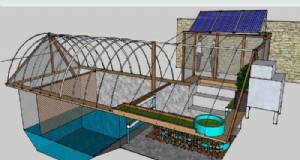
Ultieme ondergrondse kas gebouwd van omgebouwd zwembad
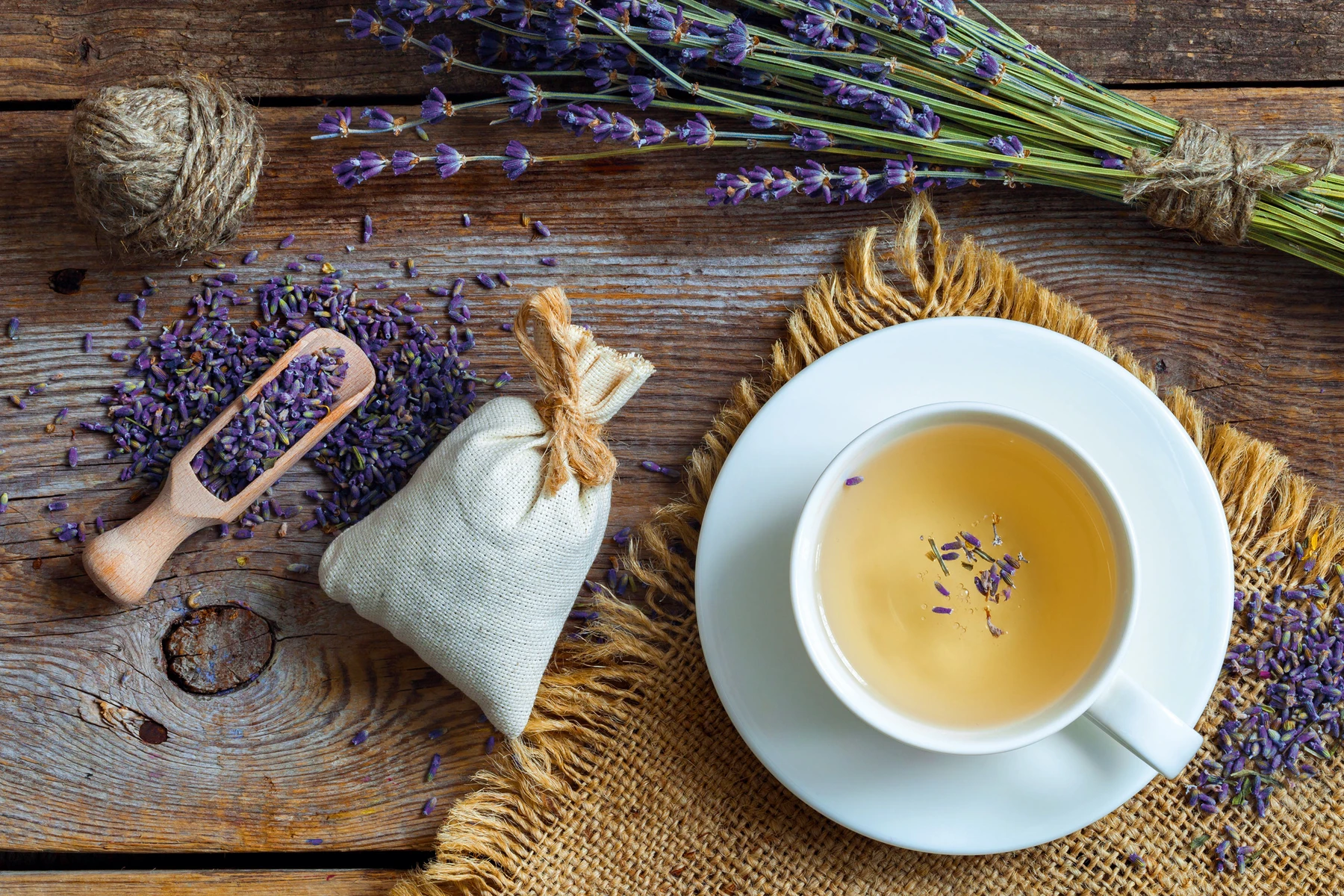
Lavendelplanten in je eigen tuin laten groeien?
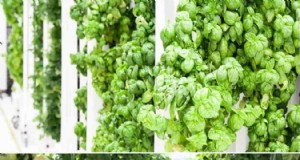
Verticale moestuinideeën, Ontwerp en lay-out
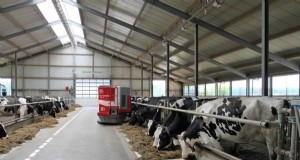
Informatie over kleinschalige melkveehouderij
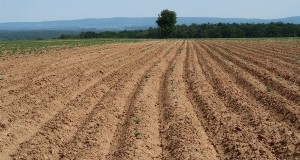
Grondsterilisatietechnieken, ideeën, Tips
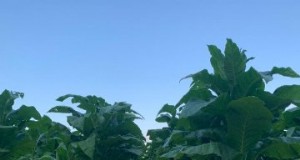
Geen stilte voor de storm voor boeren
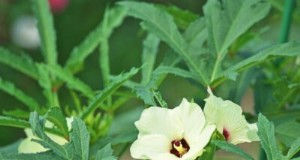
Okra planten:hoe Okra te kweken

Ficus Audrey | Een uitgebreide gids voor plantenverzorging
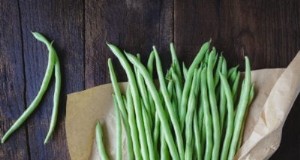
Gids voor het verzorgen van bonen voor binnen:kun je binnen bonen kweken?
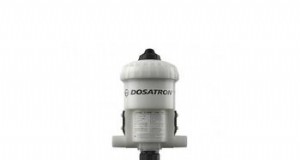
Dosatron - Model D25RE2AO - Speciale dispenser voor organische zuren